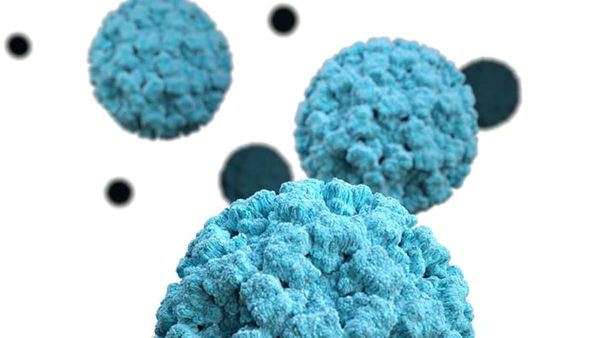
Every activity has an associated level of risk. There is no bridge with zero risk of collapse, no playground with zero risk of injury and no food or air with zero risk of cancer-causing chemicals. If we take the word “safe” to mean “zero risk”, there is no safe bridge to cross, no safe playground, no safe food to eat and no safe air to breath. We could adopt this view but it won’t improve our quality of life.
Reports of chemical contaminants in some Sydney water supplies have recently raised concerns for human health. PFAS (per- and polyfluoroalkyl substances) are sometimes called “forever chemicals” as they are difficult to destroy (compared with compounds such as sugar or protein, which are easier for the environment or the human body to break down). The PFAS currently in focus are perfluorooctanoic acid (PFOA), perfluorooctane sulphonate (PFOS) and perfluorohexane sulphonate (PFHxS).
Australian public drinking water suppliers should comply with the Australian Drinking Water Guidelines. The guidelines indicate contaminant concentrations that should not be exceeded for the drinking water to be considered “safe”.
For some chemicals a toxicity “threshold” can be identified. This means there is a level of exposure to the chemical below which no toxic effects are believed to occur. An observed toxicity threshold can be used to calculate a safe drinking water guideline level by applying various assumptions such as the volume of water people drink. These calculations also include safety factors to account for sources of variability and uncertainty.
Drinking water guidelines calculated in this way are said to provide a safe level of exposure since they correspond to a level below the threshold of toxic effects. This approach was used to derive the current Australian Drinking Water Guidelines values for PFOA of 560 nanograms per litre (560 ng/L) and the combined concentration of PFOS and PFHxS (70 ng/L).
Until recently, health agencies did not consider these chemicals to be cancer-causing. However, this changed in 2023 when the International Agency for Research on Cancer established, on the balance of evidence, that PFOA is cancer-causing to humans and PFOS is “possibly” cancer causing.
Once a chemical is considered cancer-causing, the model used to understand health risks changes. The cancer model implies that any exposure leads to some increased risk of cancer. A practical consequence is that the only level of exposure with “zero risk” is “zero exposure”. This is the source of the commonly claimed “no safe level”. However, very low levels of exposure correspond to very low risks.
Given the choice, we would all prefer “zero risk” to “very low risk”. However, “zero” corresponds to a concentration that can’t be measured or verified since all water quality tests have a minimum detectability greater than zero. Furthermore, there are practical limits to achieving “zero” concentration, even if we could verify it.
Recent media coverage has compared Australia’s water guidelines unfavourably with the more stringent limits for PFAS of the United States. The approach taken in the US is to communicate a purely aspirational “goal” for cancer-causing chemicals to have a concentration of “zero”. However, for practical purposes, the US government sets maximum allowable levels at concentrations it considers reliably measurable and achievable. This is how the US drinking water limit of 4 ng/L was derived for PFOS and PFOA. This is not a number that corresponds to an accepted level of risk, just one that can be achieved and measured.
We could acknowledge that while risk always exists, good design and management can make risks very low. If we are prepared to accept very low risk in lieu of impossible “zero” risk, we can ask, “how low is acceptable?”. The answer is a value-judgment and referred to as a tolerable level of risk.
The World Health Organization bases guideline values for cancer-causing chemicals on a “tolerable level of risk”. WHO drinking water guidelines are conservatively presented as the concentrations in drinking water associated with an estimated upper-bound excess lifetime cancer risk of 1 in 100,000. This implies one additional case of cancer per 100,000 of the population ingesting drinking water containing the substance at the guideline value for 70 years.
This upper-bound value takes into account large uncertainties. It is highly probable that the actual level of risk is less than this but risks at low levels of exposure cannot be experimentally verified. One additional case in 100,000 would need to be observable on top of the existing rate of cancer among 70-year-olds, which is thousands of times greater.
Now that PFOA and PFOS are considered cancer-causing chemicals, the Australian guidelines must be reassessed. If suitable data can be identified to apply a cancer model calculation, we can define a tolerable level of risk and determine corresponding concentrations. Otherwise, it will be appropriate to maintain “threshold model” calculations.
The key takeaway is that while different countries take different approaches to risk, Australian guidelines are not wrong or unsafe. It is important to continue updating the guidelines as evidence emerges but people don’t currently need to be concerned about cancer risk when drinking tap water.
Australian health officials should not be tempted to adopt the US approach, which is not aimed at achieving an agreed level of safety. Lower risk levels could be achieved by requiring lower drinking water concentrations. But this will incur costs. Before spending billions of dollars to reduce imperceptibly low risks to even lower levels, we should surely consider whether billions could alternatively be spent in a way that achieves real and observable public health outcomes.
• Stuart Khan is professor and head of the School of Civil Engineering at the University of Sydney







